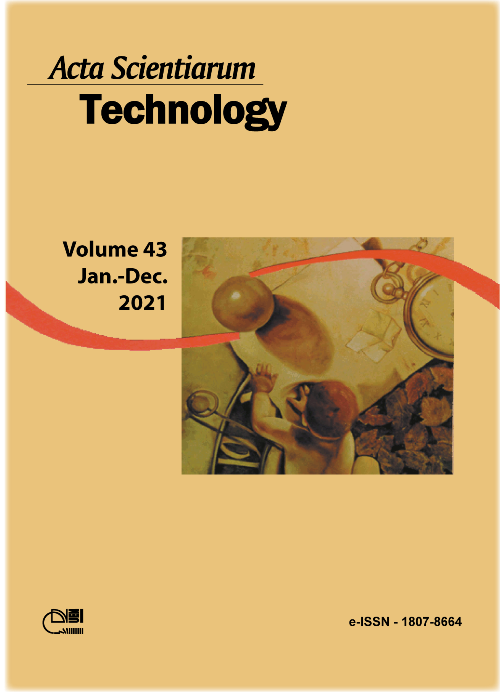Sulfated agaran with 4,6-pyruvated form from red seaweed Acanthophora muscoides attenuates thrombin formation: in vitro and ex vivo studies
DOI:
https://doi.org/10.4025/actascitechnol.v43i1.55043Palavras-chave:
sulfated polysaccharide; chemical analysis; alternative system; clot formationResumo
In vitro studies have described the sulfated agaran from Acanthophora muscoides as an intrinsic inhibitor of thrombin generation (TG), but not in ex vivo assay. This investigation partially characterized a pyruvate fraction with in vitro and ex vivo effects on an intrinsic/extrinsic pathway-induced thrombin generation (TG) continuous model using 36 or 60-fold diluted mice or defibrinated, normal human plasma. Fraction separated by DEAE-cellulose chromatography exhibited charge homogeneity and non-sulfated polysaccharides (<100 kDa) by agarose and polyacrylamide gel electrophoresis, respectively, using Stains-all alone. Fourier Transform Infrared and Nuclear Magnetic Resonance studies indicated a 4,6-pyruvated agaran-structure. The fraction and heparin had no effect on prothrombin time, but there was a preponderant intrinsic rather than extrinsic pathway inhibition in TG assay; themselves, acting on both free and fibrin bound thrombin activity without chromogenic substrate interaction. Both fractions, desulfated and native, anticipated and induced thrombin formation in activators-devoid or normal plasma. In addition, mice pretreated with fraction (20 mg kg-1, intraperitoneally) reduced intrinsically plasma TG ex vivo after 2h. Heparin suppressed TG in vitro, but induced it ex vivo. Therefore, agaran from A. muscoides blocks TG on in vitro and ex vivo studies, suggesting to evaluate the blood coagulability status.
Downloads
Downloads
Publicado
Como Citar
Edição
Seção
Licença
DECLARAÇíO DE ORIGINALIDADE E DIREITOS AUTORAIS
Declaro que o presente artigo é original, não tendo sido submetido í publicação em qualquer outro periódico nacional ou internacional, quer seja em parte ou em sua totalidade.
Os direitos autorais pertencem exclusivamente aos autores. Os direitos de licenciamento utilizados pelo periódico é a licença Creative Commons Attribution 4.0 (CC BY 4.0): são permitidos o compartilhamento (cópia e distribuição do material em qualqer meio ou formato) e adaptação (remix, transformação e criação de material a partir do conteúdo assim licenciado para quaisquer fins, inclusive comerciais.
Recomenda-se a leitura desse link para maiores informações sobre o tema: fornecimento de créditos e referências de forma correta, entre outros detalhes cruciais para uso adequado do material licenciado.



















